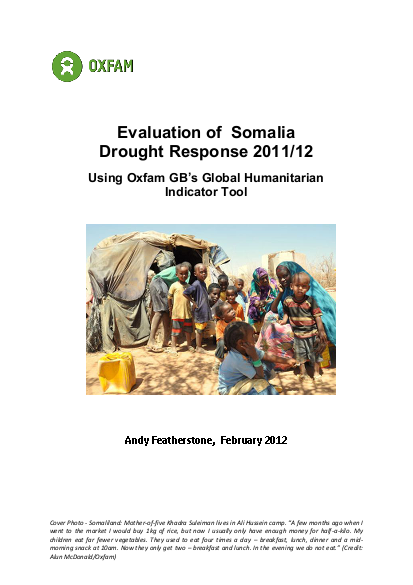
Context of the drought and Oxfam’s response A combination of drought, war, restrictions on aid organisations added to the widespread poverty that people experience throughout large parts of Somalia and pushed areas of the country into famine in 2011. While Oxfam has been working in Somalia for many years and had sought to respond to the drought as a category 2 emergency, it wasn’t until it was escalated to category 1 on 5 July 2011 that there was a significant scale-up in operations. Just 2-weeks later, on 20th July 2011 the United Nations (UN) declared that parts of southern Somalia (southern Bakool and Lower Shabelle) had met the technical criteria of famine.
Methodology As part of a wider organisational undertaking to better capture and communicate the effectiveness of its work, a decision was taken for Oxfam GB to pilot a new evaluative method to assess the quality of targeted humanitarian responses. This method uses a global humanitarian indicator tool which is intended to enable Oxfam GB to estimate how many disaster-affected men and women globally have received humanitarian aid from Oxfam GB that meets establishes standards for excellence. Equally importantly, it enables Oxfam GB to identify the areas of comparative weakness on a global scale that require institutional attention and resources for improvement. This tool consists of 12 quality standards with associated benchmarks, and a scoring system. It requires documented evidence, complemented by verbal evidence, to be collected and analysed against these benchmarks. A score is generated for the programme’s results against each standard and as a cumulative total.
